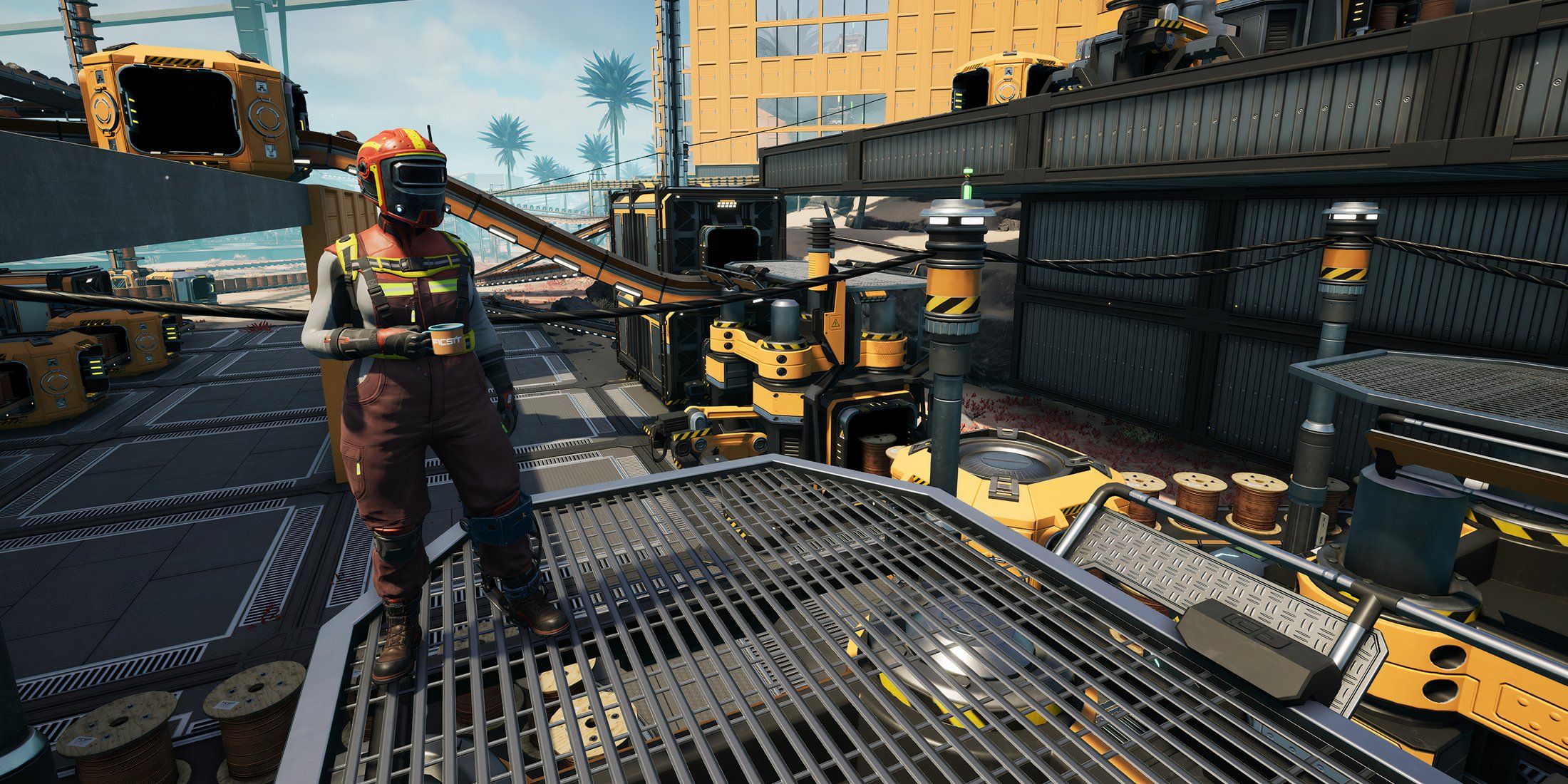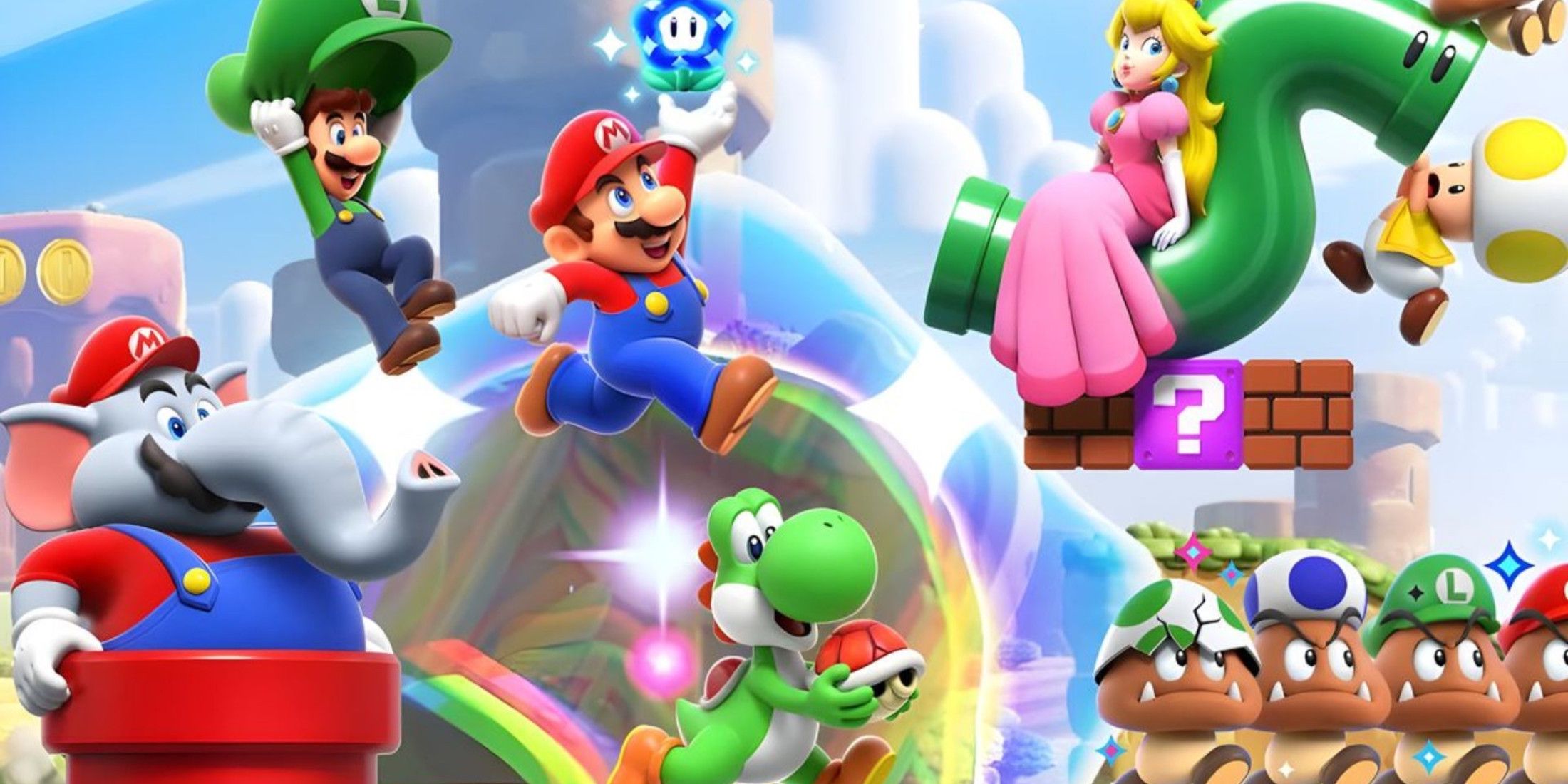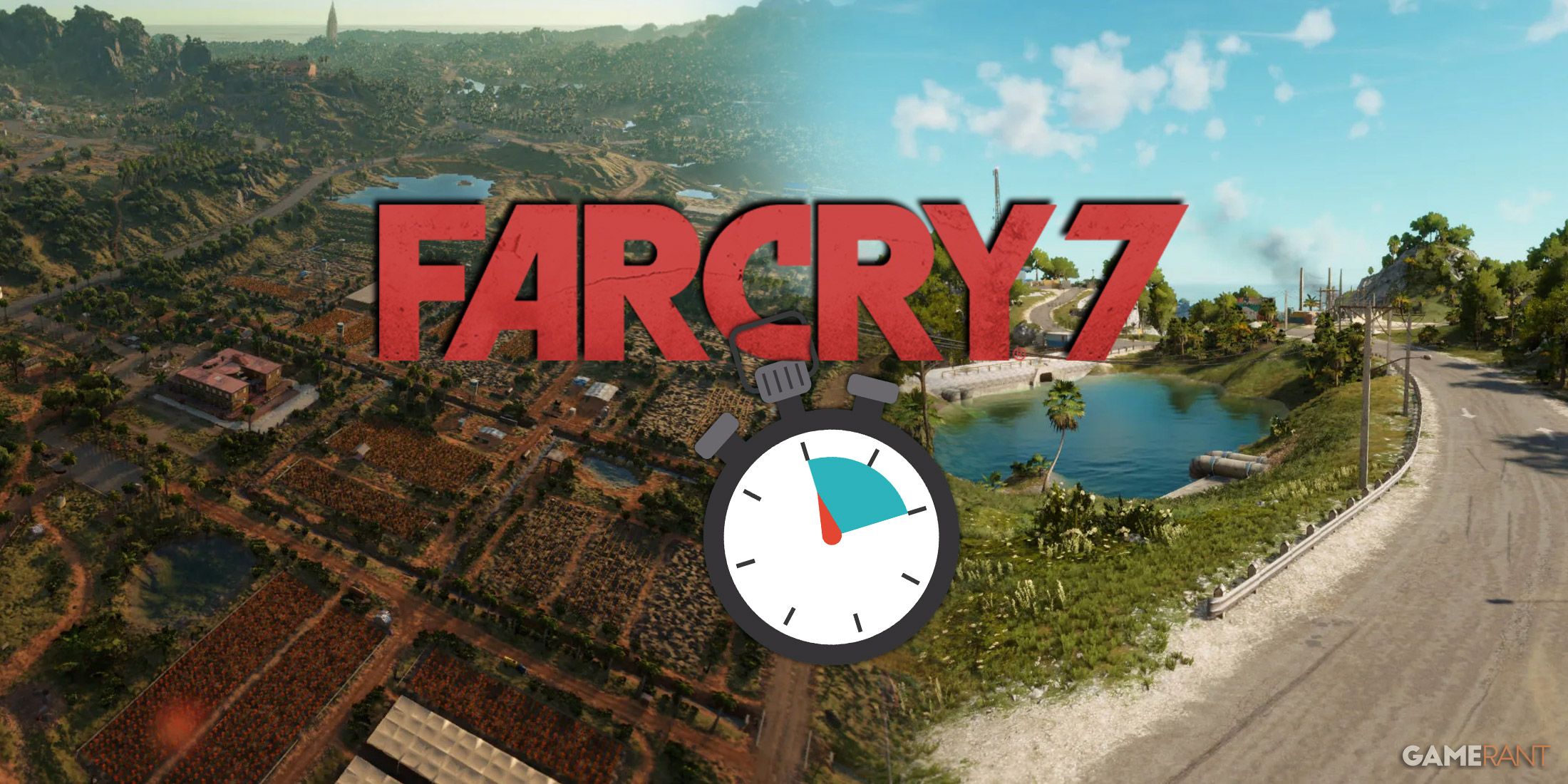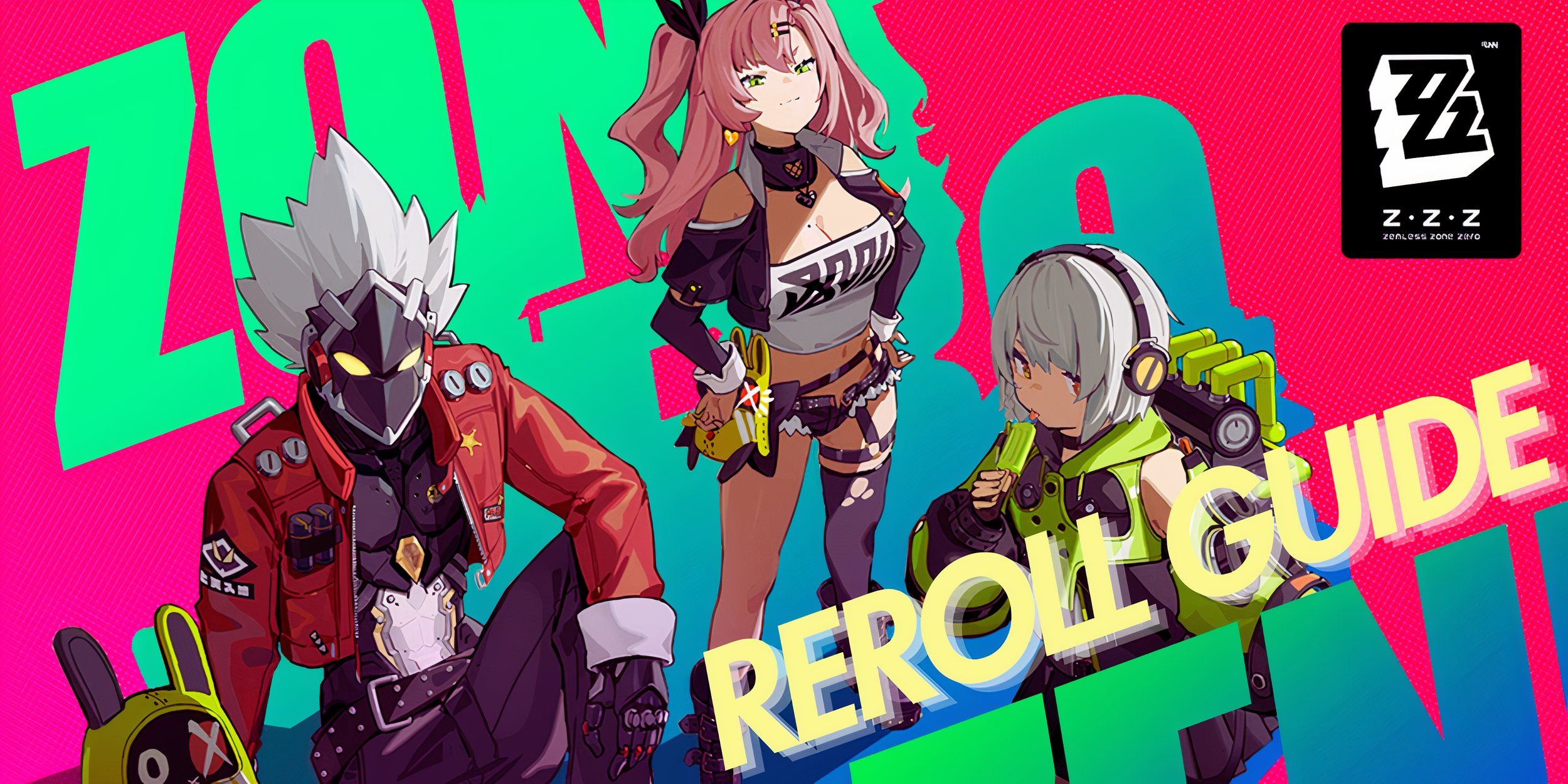Early Access can be a real boon for games like Satisfactory, as the ability to see what the fans enjoy most about the titles they play can, allow studios like Coffee Stain to make adjustments. As a result, Coffee Stain has made its factory sim into something far different than it was ever intended to be. That, Coffee Stain says, is the secret to its success.
Game Rant spoke with Satisfactory community manager, Snutt, about how the game has evolved over his eight years working on it, covering everything from its early development to its 1.0 release in September.
The Factory Sim Must Grow
Satisfactory had some humble beginnings, and Coffee Stain imagined its factory game going in a different direction at several points. Notably, the game was originally going to have a heavier focus on combat with more creatures and combat-focused mechanics. Players, however, weren’t as interested in that as they were in other aspects of the game, so the developers took the game in the direction players were more excited about.
Being a part of the Coffee Stain team before the game entered Early Access five years ago, Snutt has seen how the game evolved and changed over time, and shared that perspective.
I feel like
Satisfactory
had a much more cartoony identity before, when I joined, and then when we announced it we slowly over time made it less cartoony, and more of its own thing. And we sort of figured out what our own thing was … when I look back now on the original launch, it’s wild, how different the game looked, but also how it played. It feels so stiff to play the old version of Satisfactory, and now it feels way more fluid.
Part of developing that unique identity for Satisfactory was also how to make it stand out from Factorio. Snutt said Factorio was absolutely an inspiration behind Satisfactory, and he understands the reason for the comparisons; after all, they are both factory building games from indie developers who found a lot of success in Early Access. Distinguishing itself from a 3D Factorio was a critical part of developing Satisfactory into what it is today, he explained.
Part of that development has been working with the community to implement various changes the players were looking for from their Satisfactory experience. One of Snutt’s favorite memories from the Early Access period was the story of how pipes came to be part of the factory infrastructure. Initially, pipes started as a joke among the community that Coffee Stain egged on. This led up to Update Three, which was all about pipes. Revealing that on YouTube, Snutt said they opened that stream with Rick Astley’s Never Gonna Give You Up. When it sunk in on the audience that the update was going to bring pipes, he remembered the crowds going wild.
Other innovations driven by the community include the introduction in Update Five of more cosmetic building options. He said that update turned the game on its head, providing the biggest night-and-day change Satisfactory has ever had. Before that update, players built the kind of large, blocky structures that provided a basic and utilitarian factory. After it, players were posting to the Satisfactory subreddit cosmetically satisfying creations, sometimes without even having a meaningful purpose to the factory. Snutt mentioned a recreation of the Eiffel Tower as an example, with some players refocusing their Satisfactory experience on creating art pieces instead of sending materials to their corporate masters at FICSIT.
What’s Satisfying About Satisfactory
Even the way the game’s name has been interpreted has changed across Early Access. It was the way automation games feel satisfying that changed the name’s context in the minds of players, said Snutt.
When we came up with a name, we were concerned that satisfaction just means “adequate”. Is it good to name a game? But it’s funny how most people actually associate it with the word ‘satisfaction.’ That’s not something we anticipated. That was something that just kind of happened. It might be the neatness, or the fact that you see things just roll out and do the thing, I think that’s very gratifying. Like when you set something up and then you run it and then it just works … you create these logistical setups, and you have to solve these problems, and then you piece it together, and then you let it run, and if it works, you’re like, “Oh, yes, I did it. Now I can do the next thing.
Snutt thinks a large part of the appeal of these games is the creative problem-solving involved with making something efficient, clean, and able to run on its own. Another aspect that draws players to games that simulate work like Supermarket Together, Satisfactory, or Recettear is the ability to do something that may resemble a player’s day job but at their own pace, with creative control and a dash of whimsical absurdity provided by the tone these games tend to have.
Snutt also described a sense of players coming home from their job to their second job: Satisfactory. He wonders if people are so invested in productivity and work in real life that the idea of productivity and work within someone’s free time feels so natural that it becomes appealing. But also, the gameification of accomplishment itself can be satisfying, as it can help reframe how people think of work in general. Setting tasks that can be reached to give the player a sense of having achieved something, slowly ramping up to more complicated and demanding tasks, increases that feeling of accomplishment that is so integral to a game like Satisfactory working.
In that sense, something like Satisfactory can be a proxy for a work environment. Players facing increasingly daunting challenges where failure has only virtual consequences and success generates a feeling of achievement that can, rather fittingly, feel satisfactory.
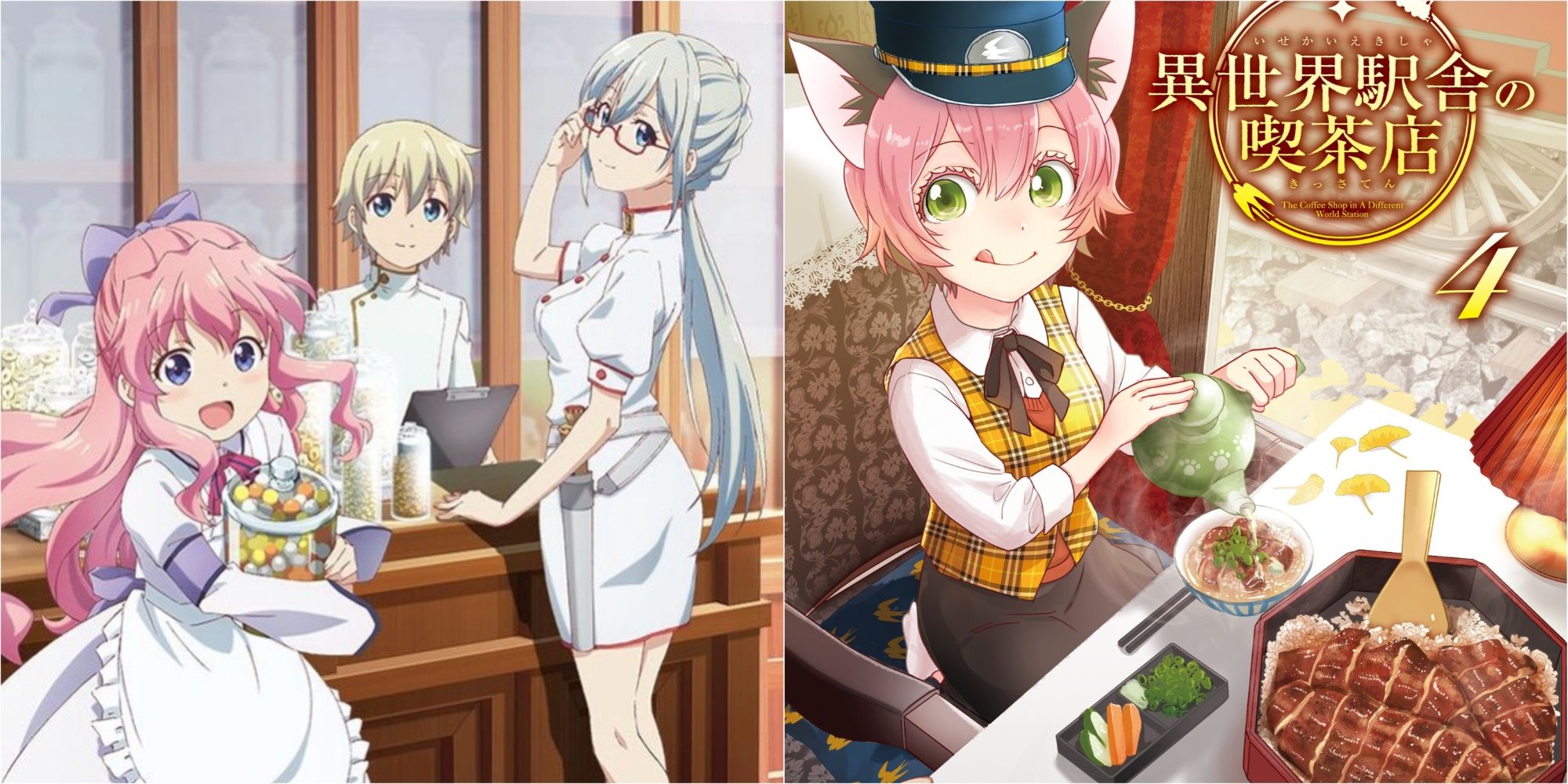
/cdn.vox-cdn.com/uploads/chorus_asset/file/24020915/226270_IPHONE_14_REGULAR_PHO_akrales_0657.jpg)
